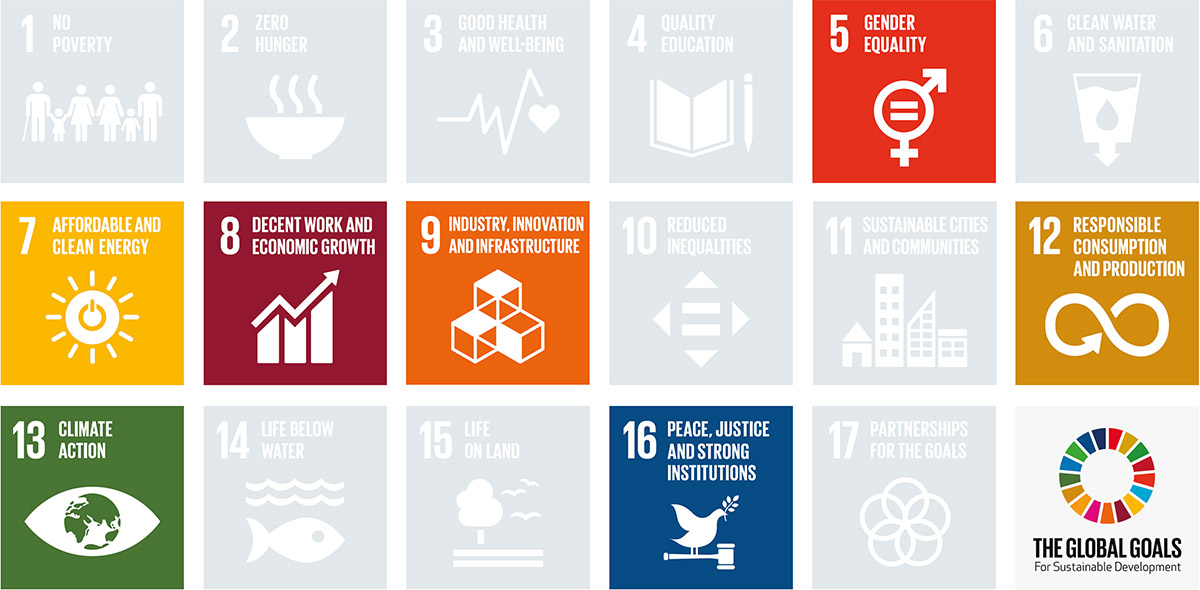Objectives and performance measures
HEXPOL has implemented Group-wide objectives to reduce its environmental impact, to create safe and secure
workplaces and to be a good corporate citizen. The work is conducted systematically and the objectives are linked to UN’s Agenda 2030 and the Global Sustainable Development Goals. Performance measures showing the trend are briefly presented in the table below.

Objective | Sustainable Development Goals | Status | Trend |
|---|---|---|---|
Energy consumption (GWh/net sales) is to be reduced
continuously. The production units work within the framework of ISO 14001 and/or ISO 50001 with detailed
targets for increased energy efficiency. | 7 | The installation of energy-efficient production equipment, LED
lighting, infrastructure and energy monitoring equipment contributed
to more efficient energy consumption. In a five-year perspective,
energy efficiency has increased and the key performance indicator for energy consumption has decreased by about 25 percent
since 2010. | |
Emissions of carbon dioxide (tonnes/net sales) are to be
reduced by 15 percent by the end of 2018 compared
with the average for 2010–2011. This target pertains to
carbon dioxide emissions resulting from the use of energy.
There are various types of local targets and it is common
for Group companies to have introduced a joint goal for
climate and energy. | 13 | Currently, about 24 percent of energy use consists of fossil-free
electricity and biofuels. Over a five-year perspective, the key performance indicator has developed in the right direction and the
objective has been achieved with a good margin. A new objective
will be presented in 2019 | |
All facilities are to have certified environmental management systems (ISO 14001). Acquired companies must
implement the environmental management system within
a period of two years. | 9 | Two companies were certified in accordance with ISO 14001
during the year and 97 percent of the plants are now certified in
accordance with ISO 14001. There are favorable opportunities to
achieve the objective. | |
The use of hazardous chemicals must be identified,
controlled and, wherever possible, hazardous substances
are to be phased out. HEXPOL should be viewed as a frontrunner in the polymer industry as a supplier of environmentally compatible products. | 9,12 | Work to limit the use of particularly hazardous substances is
conducted continuously. During the year, approximately 15 substances were replaced, including several phthalates (plasticizers). The development of environmentally compatible products continued in 2018 (page 22-23). About 15 percent of the polymer raw materials consisted of recycled plastic and rubber. | |
The vision is that no accidents will occur at our workplaces. The target is that the number of accidents will
be reduced. Systems for reporting near misses are to
be in place in all operations. | 8 | The number of accidents with absence and the number of lost
working days decreased compared with the preceding year.
The outcome was the lowest in the past five years. Systems for
reporting near misses are in place in most of the units. | |
Supplier Sustainability Guideline is to be applied in the supply chain. | 12 | During 2018, approximately 470 assessments were performed, of which approximately 35 were audits. |
Objective already achieved | Positive trend, objective possible to achieve | No change | Negative trend, objective not achieved |
|---|---|---|---|


